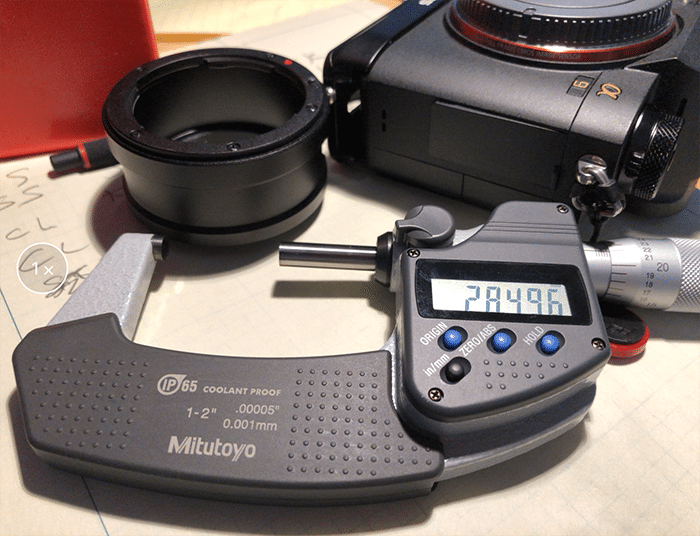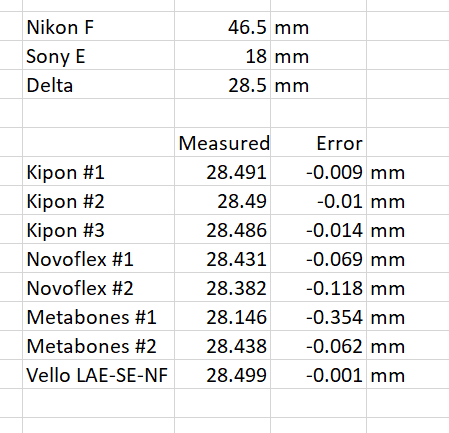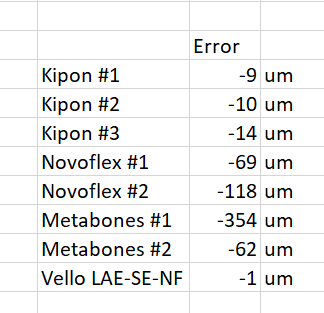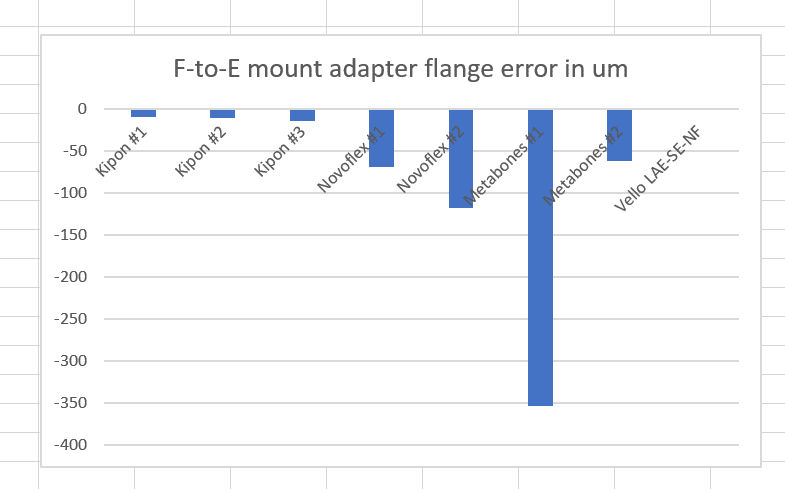I’ve had several posts about the errors in adapter length (measured from the lens flange to the camera flange). These errors are potentially problematic. They can cause your distance and depth of field to be off. There can be sharpness losses when used with lenses with floating elements. Parfocality in zoom lenses suffers.
I recently got a tool for directly measuring adapter length with micrometer resolution.
I picked a random group of Nikon F lens to Sony E mount adapters and measured the average flange distances.
When working with focus distance errors, we photographers usually like to work in micrometers (um).
Graphing the results:
You can see why I prefer Kipon adapters, although first prize goes to the Vello smart adapter. The flange distance is about the only thing I like about the Vello piece, though.




Check the flatness as well; they’re not necessarily uniform thickness around the circumference.
I reshimmed all my Contax->EOS adapters to perfect infinity focus using cheap plastic shim stock from McMaster.
I did run around the perimeter checking thickness, and all of mine are close (within a few um) of being the same all the way around. I am not able to get the same result when a single measurement is repeated, though; there is a +/- 3-4 um tolerance I have to through in.
Have you measured any Canon EF to Sony FE adapters? I am quite surprised by the high error from Metabones and Novoflex, given the high price they charge.
I have not measured any Canon to Sony adapters. Novoflex adapters are short by design:
https://blog.kasson.com/the-last-word/lens-adapter-tolerance-part-2/
It’s surprising that Novoflex doesn’t maintain the same ‘as designed error’ across their adapters.
I recall that 2013 post
In table the Vello is best, but in graph it is not. Wrong data graphed?
Look again. The Vello bar is so short it’s virtually invisible.
Hi,
Nice to see that they are all on the minus side. Kipon seems to have tight tolerances, allowing them to have a small negative bias. With Novoflex tolerances seem to be wide, not so great example of german craftmanship. I am using the Metabones and I am quite happy, but it seems like they tolerances are not any good.
Best regards
Erik